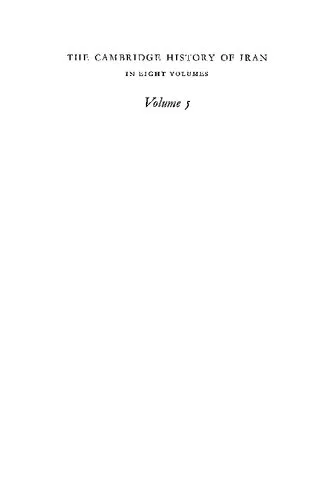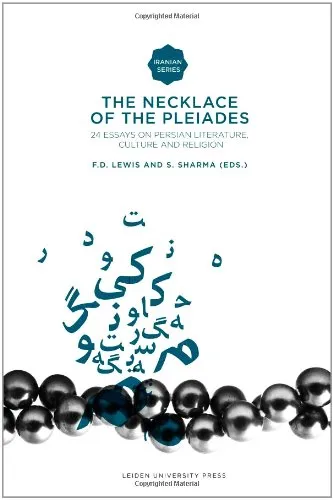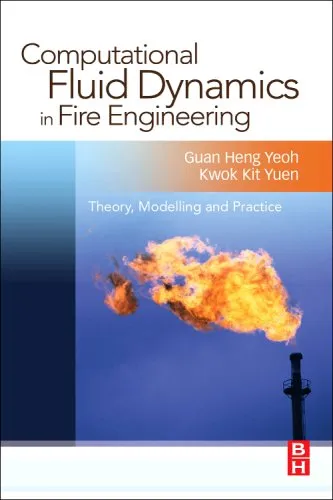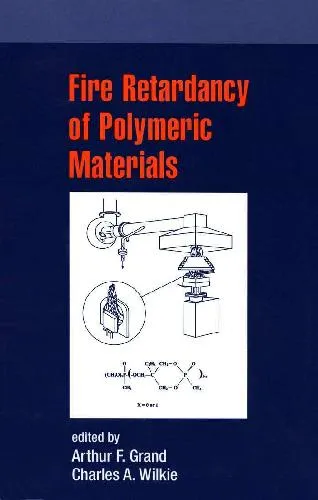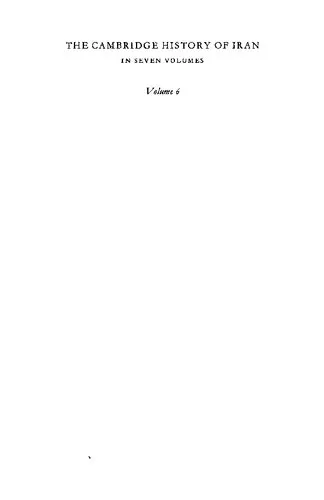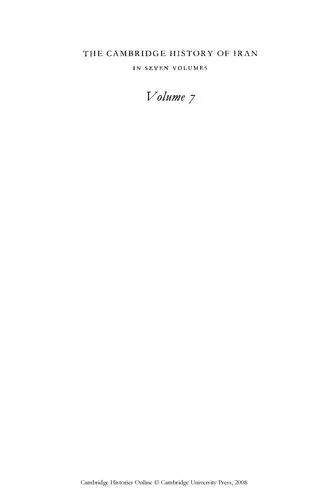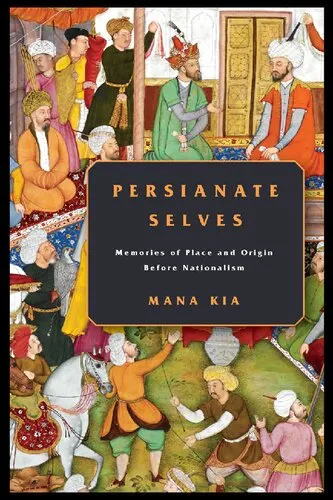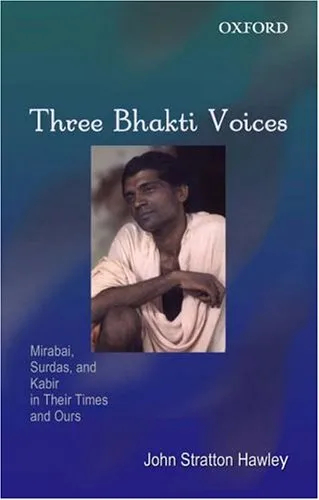The Cambridge History of Iran : The Saljuq and Mongol Periods
4.4
Reviews from our users

You Can Ask your questions from this book's AI after Login
Each download or ask from book AI costs 2 points. To earn more free points, please visit the Points Guide Page and complete some valuable actions.Related Refrences:
Analytical Summary
The Cambridge History of Iran Vol. 5: The Saljuq and Mongol Periods stands as a leading scholarly reference chronicling the complex transformations that marked medieval Iran between the 11th and 14th centuries. Edited by J. A. Boyle, this extensive work offers a multidisciplinary synthesis of political, cultural, religious, and economic developments during the reigns of both the Saljuq dynasty and the Mongol rulers.
The volume’s analytical depth is rooted in contributions from eminent historians and academics who draw on primary sources, archaeological evidence, and contemporary scholarship. It navigates through the nuanced rise of the Saljuqs, their military prowess, administrative reforms, and the flourishing of Persian culture under their patronage. It also documents the seismic shift brought about by the Mongol invasions, examining the Ilkhanid state’s policies, urban reconstruction, and the subtle interplay between nomadic traditions and sedentary governance.
A particular emphasis is placed on Iran’s position as a nexus between East and West, highlighting its strategic significance in transcontinental trade, intellectual exchange, and the dissemination of artistic innovation. While precise publication year details are unavailable due to no reliable public source, the scholarly integrity of the volume remains universally acknowledged.
Key Takeaways
This book delivers enduring insights that benefit historians, regional specialists, and readers with a passion for Middle Eastern studies, offering lessons that remain relevant to contemporary geopolitical discourse.
Readers come away with a clearer understanding of how the Saljuq empire unified disparate territories under a coherent administrative framework, fostering a climate where literature, science, and theology could flourish. The Mongol era’s contributions, often overshadowed by its initial violence, are revealed through nuanced discussions of statecraft, religious tolerance in certain periods, and infrastructural expansion.
The Cambridge History of Iran Vol. 5: The Saljuq and Mongol Periods also engages with themes of resilience, illustrating how Iranian society adapted to successive waves of change without losing its cultural identity. Secondary keywords such as “Saljuq empire history” and “Mongol Iran studies” resonate throughout the narrative, ensuring the book’s relevance for targeted academic research.
Memorable Quotes
“The Saljuq ascendancy marked not merely a change in rulers, but a redefinition of Iran’s role in the Islamic world.” Unknown
“Under Mongol dominion, despite early devastation, Iran witnessed an era of unprecedented cultural synthesis.” Unknown
“The interplay between Persian traditions and Turco-Mongol governance set the stage for transformations extending far beyond Iran’s borders.” Unknown
Why This Book Matters
The Cambridge History of Iran Vol. 5: The Saljuq and Mongol Periods is not just a historical record—it is a gateway to understanding how medieval Iran shaped and was shaped by global forces.
For scholars, it offers a rigorous, evidence-based narrative that challenges simplistic interpretations. For professionals in related fields such as cultural heritage, international relations, and comparative political systems, it provides transferable insights into governance models and societal change. Even for the engaged lay reader, it opens doors to appreciating the interwoven tapestry of Persian resilience, diversity, and innovation.
By situating Iran at the heart of Eurasian history, this volume proves indispensable for building nuanced perspectives, thereby underscoring its enduring academic and cultural relevance.
Inspiring Conclusion
In engaging with The Cambridge History of Iran Vol. 5: The Saljuq and Mongol Periods, readers are invited to embark on an intellectual journey that transcends mere chronology.
This authoritative volume stands as a testament to how Iran’s medieval epochs forged enduring legacies that continue to influence the modern world. Its rigorous scholarship, rich detail, and balanced interpretations ensure that it remains an invaluable resource for anyone seeking to deepen their understanding of Saljuq empire history and Mongol Iran studies.
Whether you choose to read, share, or discuss the insights within, the knowledge embedded in its pages offers both a foundation and an inspiration for further exploration. Let it serve as your point of departure into the vast and interconnected narratives of Eurasian history.
Free Direct Download
You Can Download this book after Login
Accessing books through legal platforms and public libraries not only supports the rights of authors and publishers but also contributes to the sustainability of reading culture. Before downloading, please take a moment to consider these options.
Find this book on other platforms:
WorldCat helps you find books in libraries worldwide.
See ratings, reviews, and discussions on Goodreads.
Find and buy rare or used books on AbeBooks.
1280
بازدید4.4
امتیاز0
نظر98%
رضایتReviews:
4.4
Based on 0 users review
Questions & Answers
Ask questions about this book or help others by answering
No questions yet. Be the first to ask!
